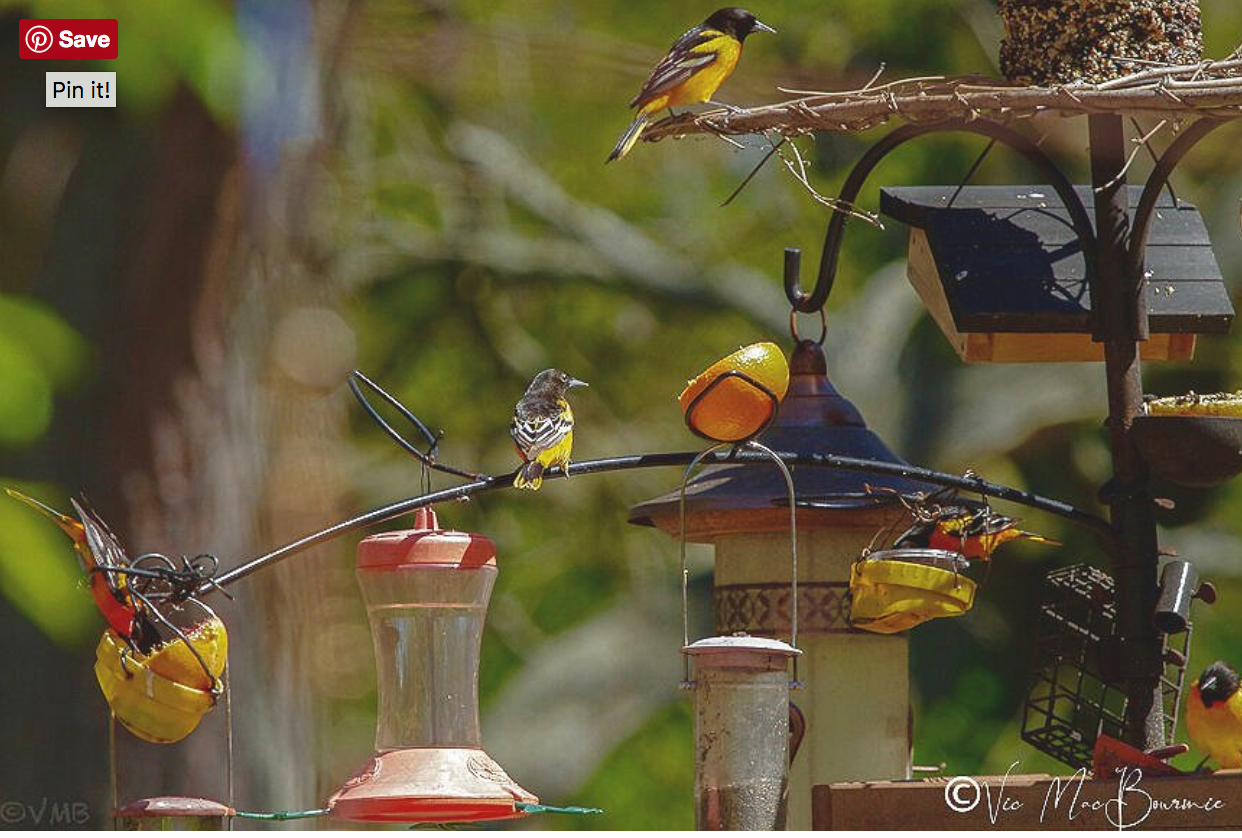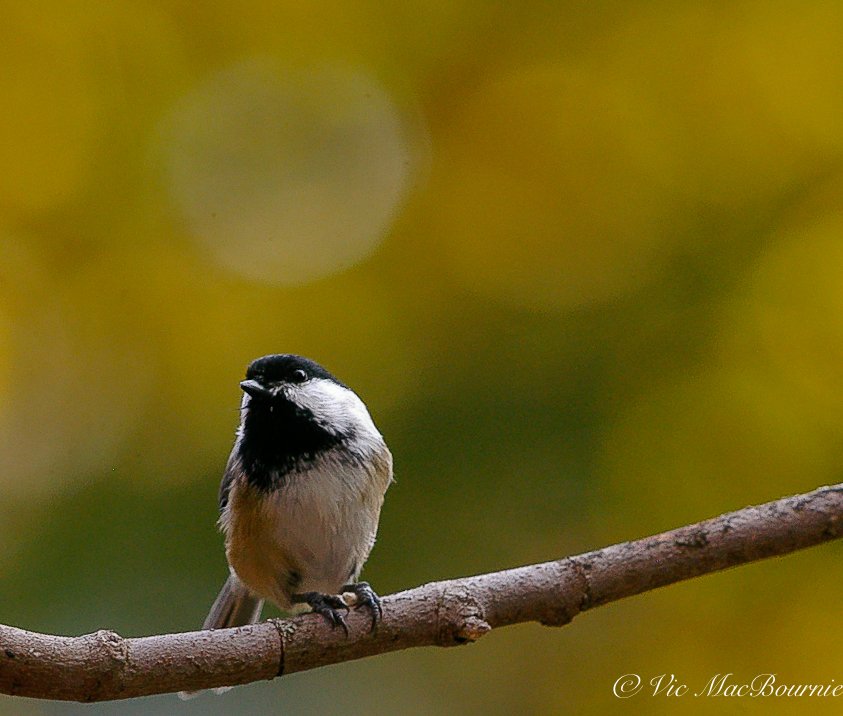Bird feeder arms: A handy addition to any bird feeding station
Perfect for holding accessory feeders, orange halves and nesting material
If you have set up your bird feeding station but still feel you need more options, a bird feeder arm might be exactly what you need.
I have two bird feeding arms that prove extremely helpful when it comes to adding small feeder accessories or additional places for feeding our feathered friends, including extra orange halves for the orioles.
Both of my feeder arms are sold as accessories for the Wild Birds Unlimited’s (WBU) Advanced Pole Yystem, but similar items are available with other systems and there is no reason you can’t add a WBU arm to an existing pole bird feeding system providing it fits on your pole.
Our main arm is called the Decorative Branch Perch and consists of a heavy gauge, curved, approximately three-foot steel rod with four decorative wire leaves that are perfect for holding everything from orange halves to nesting material, not to mention the ability to hang small, lightweight feeder accessories from.
Of course, the stylized branch that can be moved around the pole for best positioning, is meant primarily as a perch for birds waiting their turn at one of the feeders, but I like to put it to use whenever possible.
More tips on setting up a proper bird feeding station on my earlier post.
It is a favourite spot for mourning doves to rest and I’ve seen hummingbirds also taking a breather on the thin wire that forms the stylized leaves.
Wild Birds Unlimited describes the Decorative Branch as: “the perfect way to give your birds a little R and R between feedings. Some birds will take turns eating at a bird feeder. Typically, they will wait out of view in a nearby tree or bush. Our decorative perch allows birds to remain in sight while they wait to eat. It can also be used to hang additional lightweight feeders.”
I put it to use most in the spring to stuff last year’s ornamental grass cuttings into the open wire leaves for the songbirds to use as nesting material, as well as oranges for the Orioles. The solid perch allows the birds to sit comfortably on the heavier wire and pull out the nesting material or work the orange halves.
Most of the year it works as a perch for birds just waiting to get to the feeders.
It can also be used to hang small accessory feeders to hold fruit of even meal worms for Blue birds and the like.
Natural branch bird feeding arm is excellent addition
The other bird feeder arm I use on the pole system is really nothing but a cylinder that fits on the pole system and holds a single, mid-size tree branch.
This, of course, looks more natural and allows me to choose the type of branch to use as the arm. All that needs to be done is to find a branch with the right diameter to fit into the hole and then tighten the screw to secure the branch in place.
Although I use this primarily as a photographic tool to capture birds on an ever changing natural branch, it also comes in handy to hang small, lightweight feeders from. I can also spread bark butter (see my earlier post) on the natural branch to encourage woodpeckers, nuthatches, chickadees and other suet-loving birds to come to the branch to get their photographs taken.
The beauty of this bird feeder arm is that the branch can be easily changed to create a new look. Finding a branch with lichen already growing on it is ideal for photography. When that branch is finished, just add another.
The accessory can also be moved around the pole to put the bird in the best light or have it against a nice clean background.
I also find that backyard birds will readily go to the natural branch as a first choice for perching. The more textured surface provides them with a natural perch, and larger birds can get a better grip on the branch.
It also provides the perfect opportunity in the spring to cut a flowering branch from, say our crabapple tree or another flowering shrub, to use as a photographic perch for the songbirds.
But, even if you are not taking the birds’ photograph, the memory of a cardinal, indigo bunting or goldfinch perched on a flowering branch, is not one you’ll soon forget and the perfect welcome to spring birding season.
Other arms worth considering
There are several other bird feeder arms to consider that will work with whatever bird feeding system you are working with. Amazon, for example, lists several add-on arms that are designed to attach to a number of feeding poles. The Hang-IT multi-purpose add on arm for shepherds hook comes in several colours and is strong enough to handle full-size bird feeders. It claims to fit on any Shepherds hook and gets plenty of positive reviews from users.
There are so many different poles and arms that it’s impossible to list them all, but the yosager deck feeding station complete with bird feeding arms that resemble the Wild Birds Unlimited Decorative Branch Perch is a good choice for those who like to feed from their backyard decks.
It never hurts to get a helping hand feeding the birds
Whatever system you choose, it never hurts to get a helping hand feeding the birds. In this case it’s a helping arm, but you get the idea.
With a little ingenuity you could make your own bird feeding arms simply by attaching a sturdy branch to your pole system. A little wire and some duct tape or aheavy-duty clamp would certainly be enough to provide the birds in your yard with a safe, sturdy landing spot to wait their turn at the feeders.



